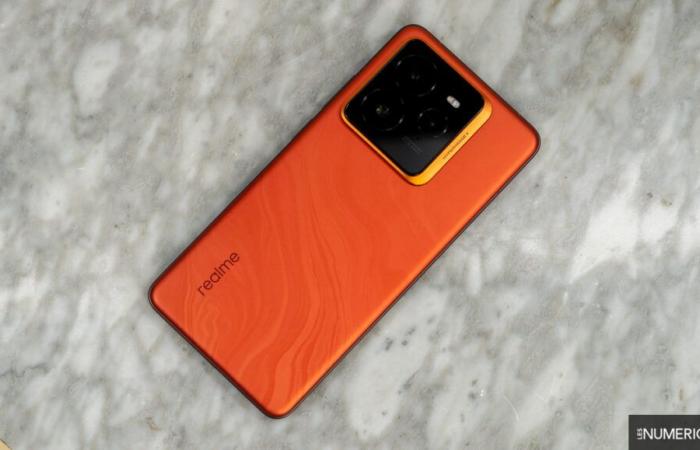The imposing photo block of the Realme GT7 Pro hides three modules. The first is based on a 50 megapixel (Mpx) Sony IMX906 sensor, accompanied by a wide-angle lens (f/1.8), while a Sony IMX882, also 50 Mpx, is accompanied by a telephoto lens equivalent to a x3 zoom. Less well off, the ultra wide-angle is satisfied with an 8 Mpx sensor.
Main module: 50 Mpx, f/1.8, eq. 24mm
The GT7 Pro does not offer sharpness equivalent to that of a Pixel 9 Pro, but is not bad at wide angle. The images are detailed, their fairly vivid colors flatter the eye and some of the textures remain visible. It's a shame all the same that the edges of the image are a little blurry and that the whole thing lacks naturalness.
enlarge
The same sharpness issues remain visible at the periphery of the scene. In low light, however, the GT7 Pro does well. He certainly uses the contrast a little too much to show the details of the scene, but the whole thing has the merit of being very readable.
enlarge
Mode 50 Mpx
Images are recorded by default in 12.5 Mpx thanks to the pixel-binning which combines four pixels into one. Provided you accept a little longer processing, you can opt for the 50 Mpx mode which results in photos that weigh more on the smartphone's memory. The colors are then a little more vivid, the details numerous when the images are taken in bright light, but we also note the appearance of artifacts, visible especially during the day – cropping is possible, but not necessarily advantageous. In low light, the image suffers from a lack of processing and this mode is of little interest.
enlarge
Ultra wide-angle module: 8 Mpx, f/2.2, eq. 16mm
It's difficult to compare the results delivered by the GT7 Pro to those of one of its competitors, because they all offer higher definition sensors. This is obviously where the problem lies: the images provided by the Realme smartphone are sorely lacking in sharpness. We notice difficulties, even during the day, in restoring all the colors on our targets, or even contours lacking in precision. The periphery of the image is a little blurry, although the distortion is contained thanks to the software processing carried out by Realme.
enlarge
At night, smoothing takes over with an exaggerated accentuation of contrasts to bring out the details of the scene as best as possible, with washed out colors as a bonus. If we suspect that compromises have been made so that the price of the GT7 Pro remains below that of its competitors, this ultra wide-angle module is undoubtedly one.
enlarge
Telephoto module: 50 Mpx, f/2.65, eq. 73mm
With its focal length equivalent to 73 mm, the third photo module of the GT7 Pro provides x3 zoom. The results are decent, but it is clear that the colors lack richness and the sharpness is a little weak. The smoothing of the textures is visible, even in bright light, and the slightly aggressive contrast compensates for the lack of information. The whole is nevertheless correct and we appreciate the sharpness of the periphery of the image.
enlarge
The smartphone does better than the Pixel 9 Pro (and its x5 zoom) in low light. Artifacts appear in the image, the outlines of small elements are sometimes odd, but the photo remains usable.
enlarge
Mode 50 Mpx
The 50 Mpx mode also offered here lacks interest, to the extent that a hybrid x6 zoom will do just as well, without slowing down the processing. It is therefore better to avoid this mode which does not add more detail to the images.
enlarge
Front module, portrait and video mode
To satisfy selfie lovers, the smartphone relies on a 16 Mpx front sensor allowing you to take pleasant self-portraits. The associated portrait mode is also effective. On the video side, the GT7 Pro exploits the power of the Snapdragon 8 Elite and offers 8K at 24 fps.






